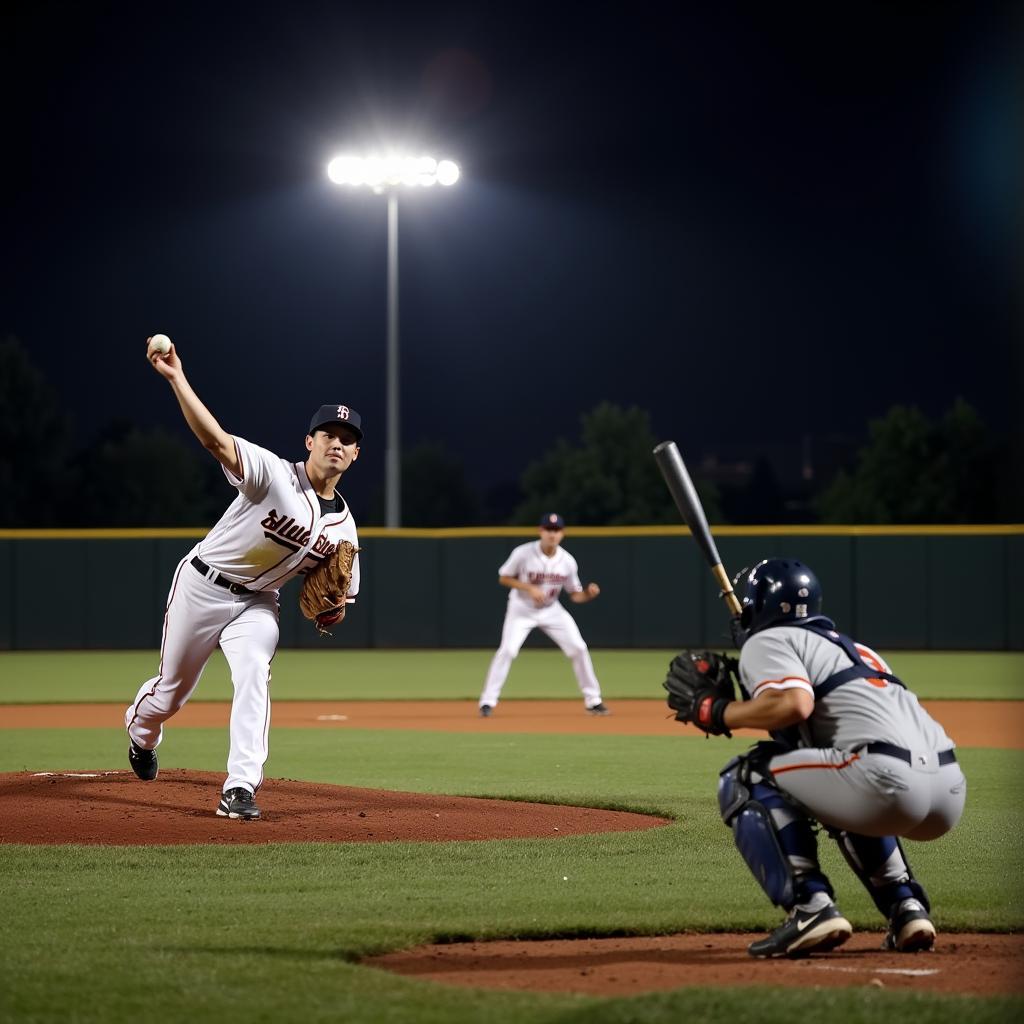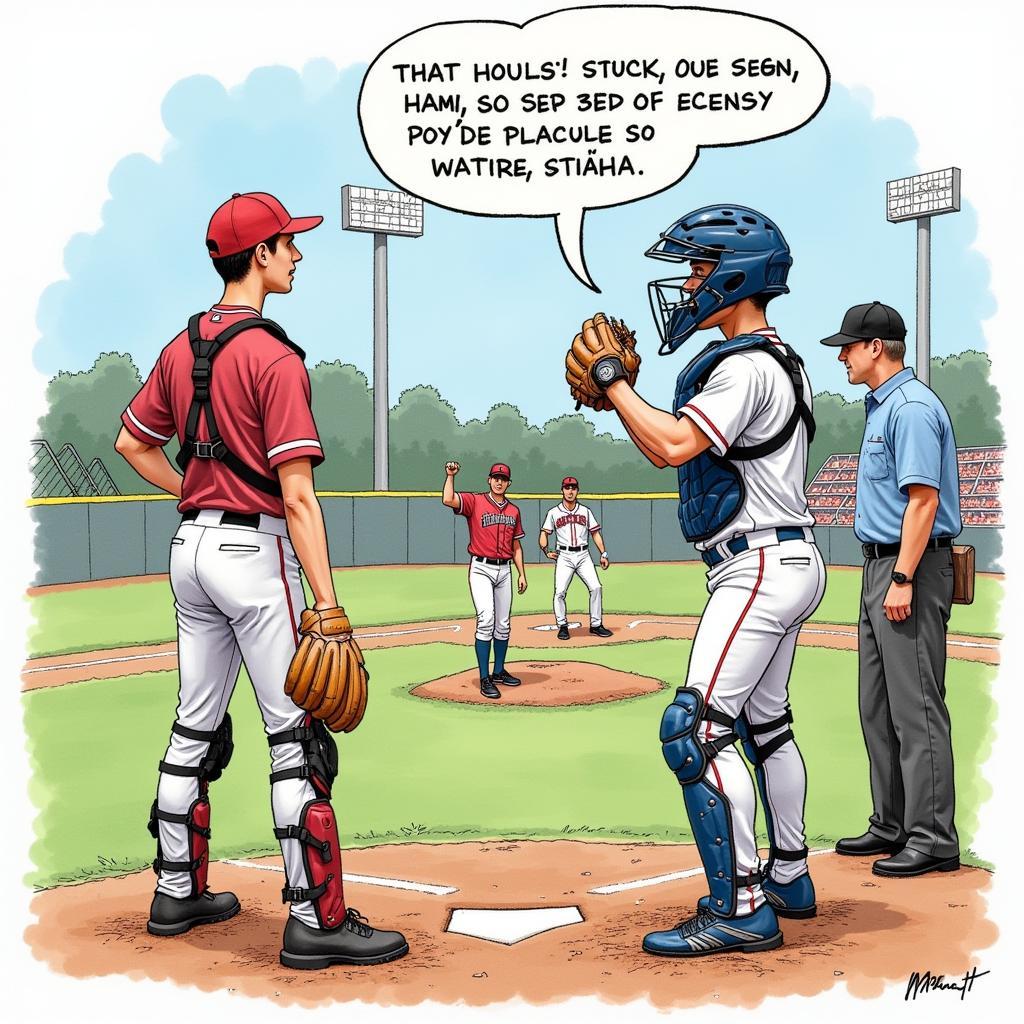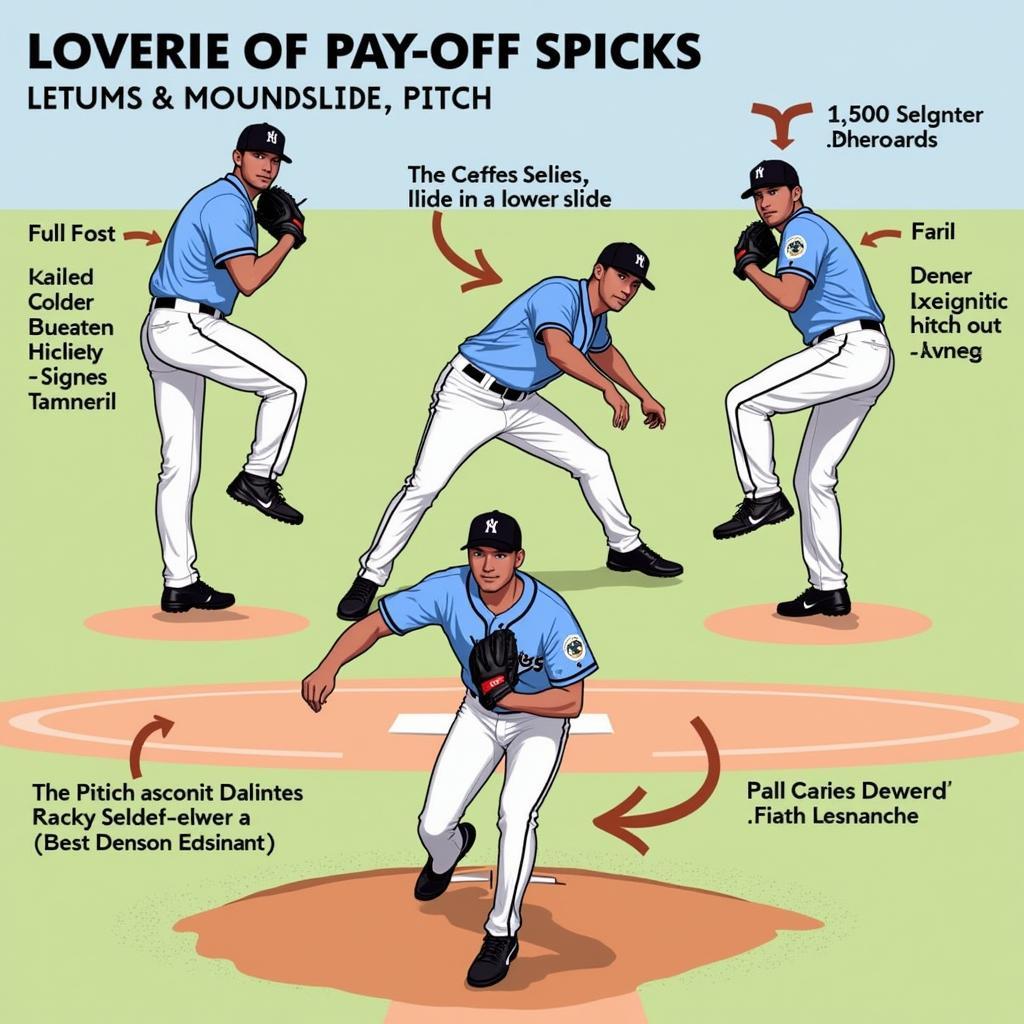Mastering the Payoff Pitch in Baseball
November 3, 2024The payoff pitch in baseball is a crucial element of the game, often determining the outcome of an at-bat. It’s the culmination of a pitcher’s strategy, designed to exploit a hitter’s weakness and seal the deal. Understanding the dynamics of the payoff pitch is essential for both pitchers and hitters alike. We’ll delve into the intricacies of this critical baseball moment, exploring its strategic significance, execution, and impact on the game.
What Defines a Payoff Pitch in Baseball?
A payoff pitch is the decisive pitch in an at-bat, usually thrown with two strikes on the batter. It’s the moment of truth for both the pitcher and hitter. The pitcher aims to induce a swing and a miss, a weak ground ball, or a harmless pop-up. The batter, on the other hand, is fighting to make contact, extend the at-bat, or ideally, get a hit. The payoff pitch isn’t always a fastball or a curveball; it’s about choosing the right pitch at the right time based on the specific match-up. The pitcher might use a fastball to overpower the hitter, a breaking ball to fool them, or an off-speed pitch to disrupt their timing. The choice depends on the game situation, the batter’s tendencies, and the pitcher’s strengths. You can learn more about the game’s different situations in our payoff pitch baseball game.
 Pitcher striking out a batter with a payoff pitch
Pitcher striking out a batter with a payoff pitch
The Strategy Behind the Payoff Pitch
The strategy involved in choosing and executing a payoff pitch is multifaceted. It requires a combination of skill, knowledge, and a touch of gamesmanship. Pitchers often set up the payoff pitch earlier in the at-bat, using different pitches and locations to keep the hitter off balance. For example, a pitcher might start with a fastball inside to jam the hitter, then follow it up with a curveball in the dirt to change the hitter’s eye level. This sets up the payoff pitch, perhaps another fastball, but this time on the outside corner, where the hitter is now less likely to make solid contact. This strategic sequencing is what makes the payoff pitch so effective. It’s not just about throwing a hard pitch; it’s about setting the stage for that pitch to be successful.
Executing the Perfect Payoff Pitch
Executing a payoff pitch requires pinpoint control and a deep understanding of one’s own arsenal. It’s not enough to just throw the pitch; it needs to be located precisely where it will be most effective. This involves understanding the hitter’s weaknesses and exploiting them. If a hitter struggles with high fastballs, the payoff pitch might be a heater just above the strike zone. Conversely, if a hitter chases low breaking balls, a sharp slider diving out of the zone could be the perfect finishing touch. The ok blue conference often hosts workshops focused on pitching strategies.
 Baseball catcher signaling location for the payoff pitch
Baseball catcher signaling location for the payoff pitch
Different Types of Payoff Pitches
There are a variety of pitches that can be used as payoff pitches, each with its own strengths and weaknesses. The fastball, with its velocity, is a common choice, designed to blow past the hitter. Breaking balls, such as curveballs and sliders, can deceive hitters with their movement, inducing swings and misses. Changeups, with their deceptive slower speed, disrupt the hitter’s timing, often resulting in weak contact. The effectiveness of each pitch depends on the specific match-up between the pitcher and hitter.
“A well-executed payoff pitch is like a checkmate in chess,” says fictional pitching coach, Roberto “Slider” Sanchez. “It’s the culmination of a carefully planned strategy, and when it works, it’s a thing of beauty.”
The Importance of the Mound Slide
The pitcher’s mechanics, including the mound slide, are crucial for delivering a successful payoff pitch. A consistent and controlled mound slide provides balance and power, allowing for precise location and maximum velocity. Any flaw in the mound slide can affect the pitch’s trajectory and effectiveness.
 Pitcher executing a mound slide delivering a payoff pitch
Pitcher executing a mound slide delivering a payoff pitch
Conclusion
The payoff pitch is a pivotal element of baseball, a moment where strategy, skill, and execution collide. By understanding its dynamics, both pitchers and hitters can improve their game. Mastering the art of the payoff pitch can be the difference between winning and losing, turning an ordinary at-bat into a decisive moment.
FAQ
- What is the purpose of a payoff pitch? To get the batter out, usually with two strikes.
- What makes a good payoff pitch? Deception, velocity, and precise location.
- Can any pitch be a payoff pitch? Yes, it depends on the situation and the batter.
- How do pitchers choose their payoff pitch? Based on the batter’s weaknesses and the game situation.
- Why is the payoff pitch so important? It often determines the outcome of the at-bat and the game.
- How can I learn more about pitching strategies? Consider researching resources like the ok blue conference.
- Is there a specific type of pitch that is always used as a payoff pitch? No, it varies depending on the pitcher and the batter.
Situations Where Payoff Pitches Are Crucial
- Close games: In tight games, a well-timed payoff pitch can prevent runs and secure a win.
- Runners in scoring position: With runners on base, a payoff pitch can prevent them from scoring.
- Late innings: In the later stages of the game, the pressure intensifies, making payoff pitches even more critical.
Further Exploration
For more insights into baseball strategy, consider exploring these related topics: pitching mechanics, hitting approaches, and game analysis.
Contact Us
For any support, please contact us at Phone Number: 0963418788, Email: [email protected] or visit our address: 2M4H+PMH, Phường Nghĩa Thành, Gia Nghĩa, Đắk Nông, Việt Nam. We have a 24/7 customer support team.